2018 Suzuki Gsx S750 Top Speed

For someone who lives and breathes sportbikes, there is no substitute for their combination of high-revving power, razor-sharp handling and light weight. The high initial cost, more expensive insurance and uncomfortable seating are irrelevant to a rider who just has to have the latest and fastest racebike-with-lights. For many of us, though, once you've had a fling with hypersport performance and the realities set in—mainly that you don't really need race-winning capability for strafing the canyons on weekends—a cheaper, more comfortable sport standard-style bike can be a better alternative for the long term. With a higher, tubular handlebar that can be easily replaced with a different bend, somewhat lower footpegs and generally more relaxed seating—not to mention a lower initial cost and cheaper insurance—you can enjoy blistering the corners as well as commuting and even light touring without visits to the chiropractor in between.
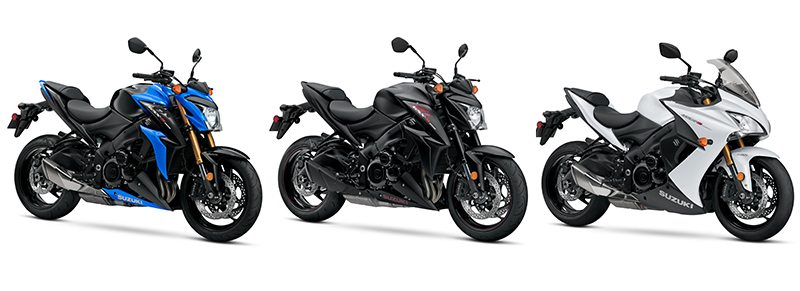
For 2018 Suzuki offers five sport standards based on its GSX-S750 and GSX-S1000 in-line fours. While the 750 gets its first major redesign since being introduced for 2015, the one-year-newer 1000 also enjoys a few improvements. The GSX-S1000 ABS ($10,799), fully faired GSX-S1000F ($11,299) and new blacked-out GSX-S1000Z edition ($10,999) are powered by the liquid-cooled, 999cc DOHC in-line four from the 2005-2008 GSX-R1000 rather than the latest Gixxer engine because of the former's long-stroke design, which helps give it better low- and midrange power and torque. The engine and transmission design also allows the GSX-S1000's mainframe to run in a straight shot from the steering head to the swingarm pivot for a shorter wheelbase. This year, new crankcase vent holes that reduce pumping losses and refined EFI mapping are good for a 4-horsepower increase, to a claimed 149 at 10,000 rpm, and a slight bump in torque to 79.6 lb-ft at 9,500. The 1000s also get a back-torque limiting clutch for smoother downshifts and new brake hoses for better stopping performance and feel. All of the GSX-S1000 models come standard with ABS.
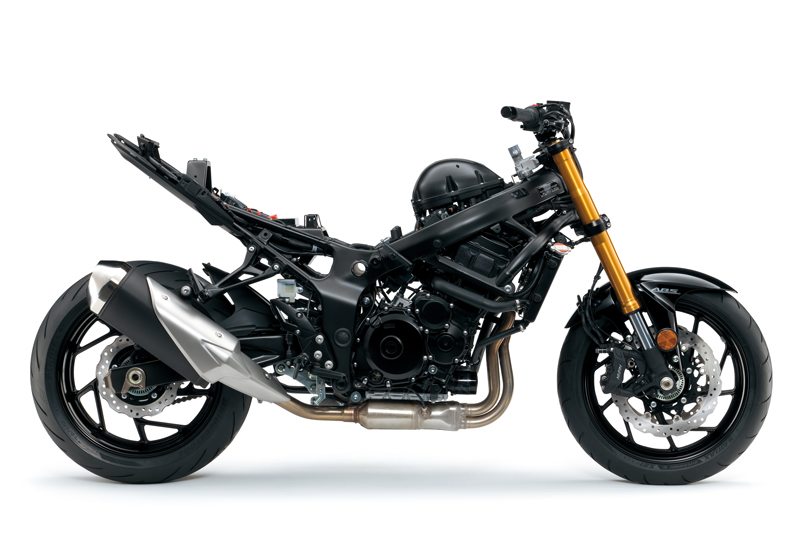
When we first tested the GSX-S750 in 2015, we were impressed by its smooth throttle response, taut power delivery and nimble handling, but felt its front brake was numb and weak, and in our subsequent comparison test the bike was surpassed by the Kawasaki Z800 (since replaced with the Z900). To address this, the GSX-S750 received a thorough redesign for 2018, including some significant engine changes. New crankcase vent holes, a new 4-into-1 exhaust, a larger airbox and new fuel injectors are good for an increase of 8 horsepower, to a claimed 112.6 at 10,500 rpm. Like the GSX-S1000 the 750 uses the 2005 GSX-R750 architecture for its long-stroke design and more upright layout, which allows a shorter chassis and subsequently better handling. The bike is also California emissions compliant now so it will be sold in all 50 states.
Advertisement
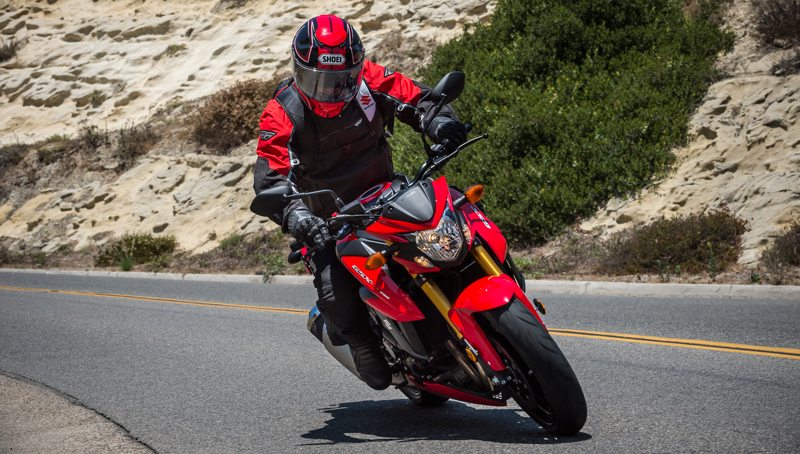
Suzuki has also added traction control with three modes plus off; its Easy Start system that fires the engine with a single touch of the starter button; and Low RPM Assist, which adjusts the engine speed when you're starting out and at low speeds to prevent it from stalling. Up front there's a new 41mm KYB USD fork with adjustable preload, and hanging off the back of the twin-spar steel frame is a new beam-type steel swingarm with a stylish trapezoid shape and new chain adjusters. Radial-mount 4-piston opposed Nissin brake calipers up front replace the 2-pot Tokicos and have 310mm petal-style floating rotors now, and the GSX-S750 also has new 10-spoke cast aluminum wheels wearing Bridgestone Battlax Hypersport S21 tires in the usual sport sizes. Finally, refreshed styling influenced by the GSX-S1000 includes a new multi-function instrument and new lighting.
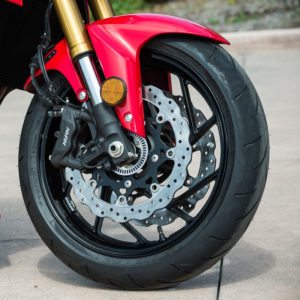
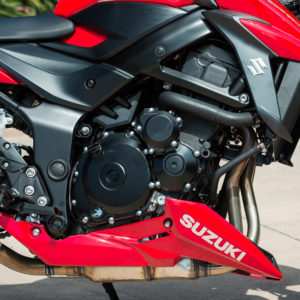
Despite its steel frame, on the Rider scale the new GSX-S750 weighs just 464 pounds wet, a single pound heavier than the claimed wet weight of the 2015 model, so the improvements come without any additional porkiness. Our test bike fires up easily with a single button push, and with plenty of power on tap once the engine speed passes about 5,000 rpm, the light bike takes off like a bottle rocket, yet it's still easy to ride at lower engine speeds. Some vibes creep into the seat near redline at 11,500 rpm, but the meat of the powerband is smooth and responsive, and shifting is clean and slick. Set at the highest Level 3 intervention, the traction control kicks in frequently when blasting out of corners or even just accelerating hard in a straight line; at its lowest Level 1 the system permits short wheelies and a bit of sliding in corners, and the setting can be changed on the fly.
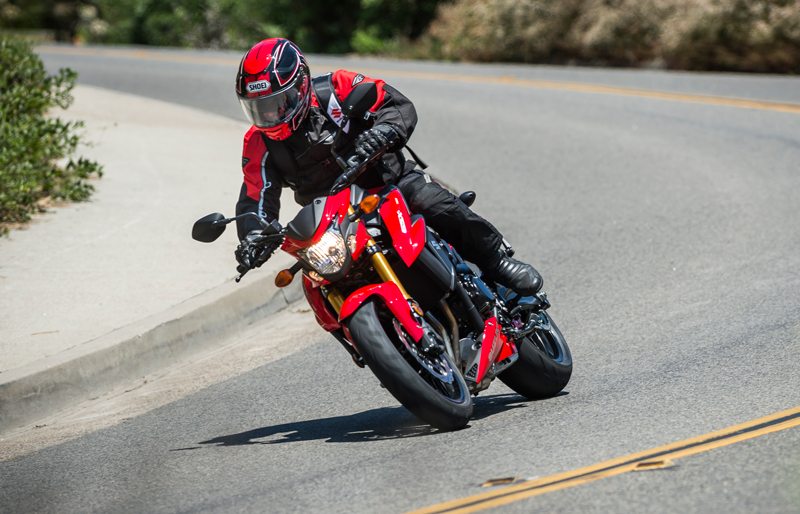
Seating on the GSX-S750 is comfortable, though the bar is lower than usual for a sport standard and it has moderately raised footpegs, giving it a pretty sporty seating position. If there's a weak spot it's the hard, smallish seat that lacks support, and when I move back to change position the rear edge cuts into my backside. The seat is a bit high for a small bike, too, and I'm on the balls of my feet at stops.
Suspension on the 750 seems pretty basic on paper but it's firm and compliant and does a pretty good job, even with a 200-pound rider aboard and ridden aggressively. Spring preload is adjustable at both ends but not damping, and damping up front is only in one fork leg, yet the damping rates are pretty high so the bike stays well controlled in corners until it gets really bumpy. The Hypersport S21 tires are nicely sticky and braking is now on par with the rest of the bike's performance, too, with great feel and strength up front and an adjustable lever, and good linear feel at the pedal. According to Suzuki this model is quite price sensitive, so to get ABS you have to jump up to the GSX-S750Z at $8,899, which wears all blacked-out styling (what appears to be an ABS sensor ring on the front wheel of the standard 750 is for the speedometer sensor).
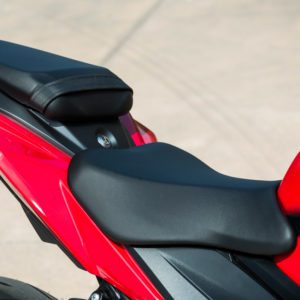
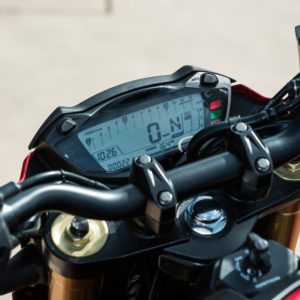
Colors for the GSX-S750 are Red/Black like our test bike and Black/Blue. It retails for $8,299 and is in dealerships now. For what is supposed to a budget-priced motorcycle, the GSX-S750 offers plenty of power, performance and versatility. Rather than view it as a watered-down sportbike, consider it a souped-up standard that's ready for most anything.
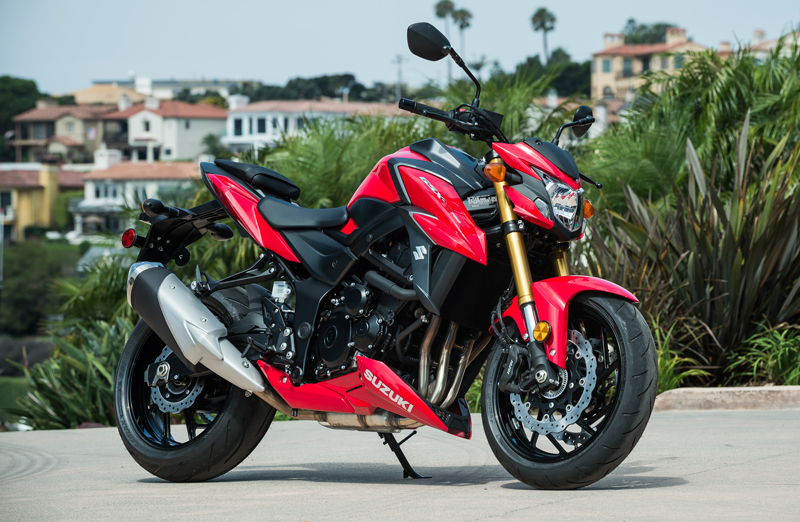
2018 Suzuki GSX-S750 Specs
Base Price: $8,299
Warranty: 1 yr., unltd. miles
Website: suzukicycles.com
Engine
Type: Liquid-cooled, transverse in-line four
Displacement: 749cc
Bore x Stroke: 72.0 x 46.0mm
Compression Ratio: 12.3:1
Valve Train: DOHC, 4 valves per cyl.
Valve Insp. Interval: 14,500 miles
Fuel Delivery: EFI w/ SDTV
Lubrication System: Wet sump, 3.8 qt. cap.
Transmission: 6-speed, cable-actuated wet clutch
Final Drive: O-ring chain
Electrical
Ignition: Electronic transistorized
Battery: 12V 10AH
Advertisement
Chassis
Frame: Steel hybrid twin-spar & girder w/ box-section steel swingarm
Wheelbase: 57.2 in.
Rake/Trail: 25.2 degrees/4.1 in.
Seat Height: 32.2 in.
Suspension, Front: 41mm USD fork, adj. for spring preload, 4.7 in.travel
Rear: Single linked shock, adj. for spring preload, 5.4 in. travel
Brakes, Front: 310mm floating petal dual discs w/ 4-piston opposed calipers
Rear: Single disc w/ 1-piston floating caliper
Wheels, Front: Cast, 3.50 x 17 in.
Rear: Cast, 5.50 x 17 in.
Tires, Front: 120/70-ZR17
Rear: 180/55-ZR17
Wet Weight: 464 lbs.
Load Capacity: 416 lbs.
GVWR: 880 lbs.
Performance
Fuel Capacity: 4.2 gals., last .8 gal. warning light on
MPG: 91 PON Min (avg) 45.7
Estimated Range: 192 miles
Save Save
Save Save
2018 Suzuki Gsx S750 Top Speed
Source: https://ridermagazine.com/2017/09/07/2018-suzuki-gsx-s750-road-test-review/



Tidak ada komentar: